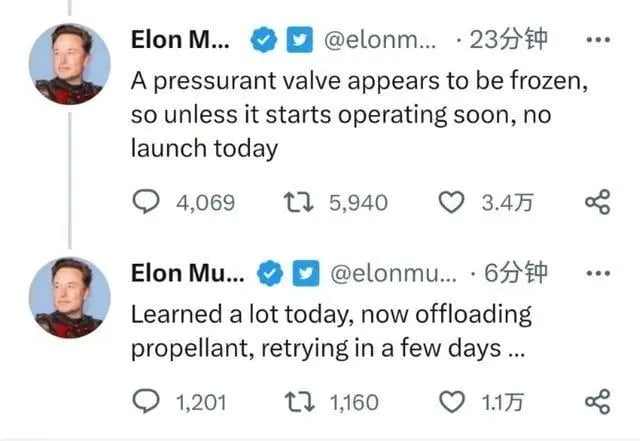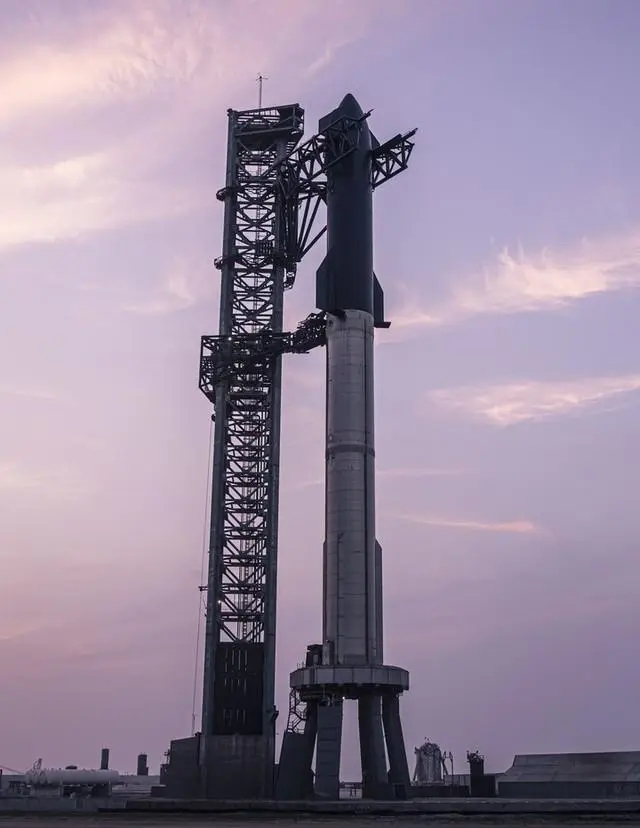At 8:33 p.m. CST on April 20, the SpaceX Starship system took off from Texas with more than 4,500 metric tons of propellant on its first orbital test mission and exploded shortly after liftoff. Despite the loss of the rocket, SpaceX employees who had been cheering and applauding seemed relieved, with one employee even spraying a bottle of champagne on a colleague.
Musk later tweeted, “Congratulations to the SpaceX team on their exciting test launch of Starship! Learned a lot in preparation for the next test in a few months.”
SpaceX tweeted after the explosion that the flight reached its highest point of 39 kilometers above the ground and that the explosion occurred about four minutes after liftoff. The team learned a lot through the test and will help improve the reliability of the Starship vehicle.
Musk also said that the flight was the first test launch of the vehicle and was exciting. He also said he thinks it is likely that the vehicle may be put into orbit this year, if not this year, then next year. He concluded by declaring: Mars, SpaceX is coming!

The development mindset of “Starship” is different from that of traditional rockets, as it is not a one-time finalized or well-documented model, but rather a series of prototype arrows that are tested repeatedly, lessons learned are summarized, and gradual improvements are made to eventually achieve the design goals. This method of rapid iteration in rocket development is similar to “Internet thinking” and has no precedent in the history of spaceflight. As a result, dozens of test arrows are “expendable” for different missions, and most of them are destined to be destroyed in various tests, provided that sufficient data is available.
Musk had predicted a 50 percent success rate for Starship’s first flight, suggesting that the rocket could explode on its first orbital test flight. The launch avoided the worst-case scenario of an explosion on the launch pad, which would have required extensive repairs, Musk’s biggest concern before the launch.
Prior to this, Starship went through multiple generations of technology iterations, with prototypes exploding as they “came out” and being updated along the way through trial and error, bringing Musk’s idea of building rockets with Internet thinking to the forefront. Traditional aerospace companies try to predict and prevent as many failures as possible in advance, but this approach takes money and time and can lead to over-engineering. Instead, SpaceX is more of a Silicon Valley software company that promotes “failing fast, but learning faster”.

Musk’s plan to colonize Mars is to send about a million people to Mars in the next few decades and build a self-sufficient city on Mars. SpaceX’s fully reusable transportation system, the Starship, is the cornerstone of Musk’s Mars dream. is the cornerstone of Musk’s Mars dream, which Musk has described as “a very modern Noah’s Ark.
The “Starship” system is believed to be the most powerful launch vehicle ever built, with an overall height of 120 meters, a diameter of 9 meters, and a capacity of up to 150 metric tons when fully reusable. The first stage “Super Heavy” rocket is equipped with 33 “Raptor” engines, and the second stage “Starship” spacecraft is equipped with three “Raptor Raptor” engine and three “Raptor vacuum” engines. “Raptor” engine using liquid oxygen methane propellant, thrust is SpaceX Falcon 9 rocket “Merlin” engine twice. The methane in the Martian atmosphere allows SpaceX to one day refuel Starships on Mars.
Last February, at the launch of Starship in Boca Chica, Texas, Musk said that the Starship spacecraft could be reused in 6-8 hours, so that it could be launched three times a day, “overweight “The rocket booster can return after 6 minutes of launch and can be launched about once every hour. Rapid reuse also means lower costs, “potentially as little as a few million dollars per flight, or maybe even as little as $1 million at a minimum.” Musk said the price is ridiculously low by space standards.
Repost:KanKanKnews
